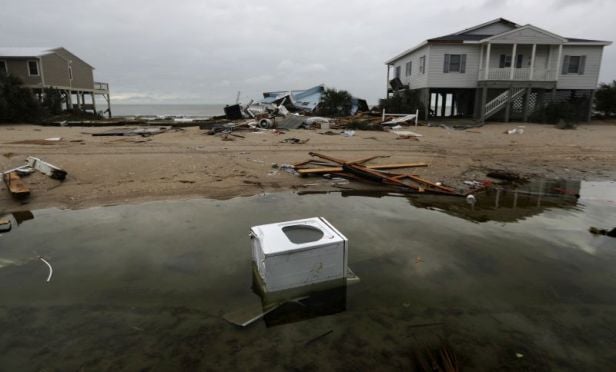 A laundry machine sits in a flooded section of what used to be a four-lane national scenic byway and is now covered in sand after Hurricane Matthew hit the tiny beach community of Edisto Beach, S.C., Saturday, Oct. 8, 2016. (AP Photo/David Goldman)
A laundry machine sits in a flooded section of what used to be a four-lane national scenic byway and is now covered in sand after Hurricane Matthew hit the tiny beach community of Edisto Beach, S.C., Saturday, Oct. 8, 2016. (AP Photo/David Goldman)
The 2017 Atlantic Hurricane season was excessively active and extremely destructive, ranking as the fifth-most active hurricane season since record keeping began in the mid-19th century.
There were several record-breaking natural disasters during the 2017 disaster season, including hurricanes Harvey, Irma and Maria, which were followed by wildfires that killed dozens of people and destroyed thousands of homes. These storms, combined with other natural disasters, such as mudslides, fires, floods and storms, led to the realization that Americans need to be better prepared to deal with the repercussions of a disaster.
Recommended For You
Want to continue reading?
Become a Free PropertyCasualty360 Digital Reader
Your access to unlimited PropertyCasualty360 content isn’t changing.
Once you are an ALM digital member, you’ll receive:
- Breaking insurance news and analysis, on-site and via our newsletters and custom alerts
- Weekly Insurance Speak podcast featuring exclusive interviews with industry leaders
- Educational webcasts, white papers, and ebooks from industry thought leaders
- Critical converage of the employee benefits and financial advisory markets on our other ALM sites, BenefitsPRO and ThinkAdvisor
Already have an account? Sign In Now
© Touchpoint Markets, All Rights Reserved. Request academic re-use from www.copyright.com. All other uses, submit a request to [email protected]. For more inforrmation visit Asset & Logo Licensing.







